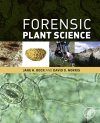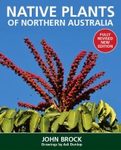Handbook / Manual
By: Jane H Bock(Author), David O Norris(Author), Tom A Ranker(Foreword By), Haskell M Pitluck(Foreword By)
205 pages, colour & b/w photos, colour illustrations, colour tables
![Forensic Plant Science Forensic Plant Science]()
Click to have a closer look
About this book
Contents
Customer reviews
Biography
Related titles
About this book
Forensic botany is the application of plant science to the resolution of legal questions. A plant's anatomy and its ecological requirements are in some cases species specific and require taxonomic verification; correct interpretation of botanical evidence can give vital information about a crime scene or a suspect or victim. The use of botanical evidence in legal investigations in North America is relatively recent. The first botanical testimony to be heard in a North American court concerned the kidnapping and murder of Charles Lindbergh's baby boy and the conviction of Bruno Hauptmann in 1935. Today, forensic botany encompasses numerous subdisciplines of plant science, such as plant anatomy, taxonomy, ecology, palynology, and diatomology, and interfaces with other disciplines, e.g., molecular biology, limnology and oceanography.
Forensic Plant Science presents chapters on plant science evidence, plant anatomy, plant taxonomic evidence, plant ecology, case studies for all of the above, as well as the educational pathways for the future of forensic plant science.
Contents
Dedication
Author Biographies
Foreword by Tom A. Ranker
Foreword by Haskell M. Pitluck
Preface
Acknowledgments
Chapter 1. Introduction to Forensic Plant Science
1. Introduction to Plants
2. The Early History of Plant Science
3. Plant Poisonings
4. Illegal Drugs of Plant Origins
5. Twentieth-Century Forensic Plant Science
6. Our Introduction to Forensic Plant Science
Chapter 2. Suitability of Forensic Plant Science Evidence for Courtroom Presentations
1. The Current State of Forensic Science in the USA
2. Court Decisions Concerning Presentation of Scientific Evidence and Expert Opinion
3. How Does Daubert Relate to Forensic Plant Science
Chapter 3. Sources for Forensic Plant Science Evidence
1. Plant Anatomy
2. Plant Taxonomy
3. Plant Ecology
4. Genetic Analyses: Use of Deoxyribonucleic Acid
Chapter 4. Forensic Plant Anatomy
1. Some Plant Basics
2. The Human Digestive System
3. Plant Cells and Time of Death
4. Collection and Sampling Methods for Digestive Tract Materials
5. Processing of Forensic Samples Using Plant Anatomy
6. The Role of Statistics in Evaluating Plant Cells in Digestive Contents
7. Summary
Chapter 5. Cases Using Evidence from Plant Anatomy
1. Forensic Plant Anatomy Involving Determination of Time of Death
2. Forensic Plant Anatomy and Aging Gravesites
3. Cases Involving Fecal Material
Chapter 6. Forensic Plant Taxonomy
1. Plant Taxonomy Fieldwork
Chapter 7. Plant Taxonomy Cases
1. Plants Containing “Recreational” Drugs
2. “Poisoned Pen” Letters
3. Nothing Like a Short Drive at the Golf Course
4. “Moss” Not Grass
5. The Burning Torso
6. Don’t Know Why…
Chapter 8. Plant Ecology
1. An Overview of Ecology for the Forensic Scientist
2. Procedures and Resources Useful for Forensic Plant Ecology
3. Sources of Ecological Plant Scientists
Chapter 9. Forensic Plant Ecology Cases
1. Uses of Forensic Plant Ecology Connecting Suspects to Crime Scenes Using Plant Fragments
2. Uses of Forensic Plant Ecology in the Location of Clandestine Graves
3. Other Uses for Forensic Plant Ecology
Chapter 10. Additional Approaches in Forensic Plant Science
1. Palynology
2. Diatoms
Chapter 11. Summation and a Look to the Future
1. A Brief Summary of Forensic Plant Science Approaches
2. How to Become a Forensic Botanist
3. Forensic Botany in the Courtroom
4. Forensic Botany in the Twenty-First Century
5. Establishment of Forensic Botany or Forensic Plant Science as a Subdiscipline within the Forensic Sciences and Botanical Science Organizations
Appendix I. Materials Needed for Plant Anatomy Analyses
Appendix II. Techniques for Slide Preparation to Examine Gastrointestinal Specimens or Fresh/Frozen/Cooked Food Samples with the Compound Light Microscope
Appendix III. Making Accurate Measurements with the Microscope
Appendix IV. Composition of Solutions Used in Preparation of Plant Cells for Microscopic Examination
Appendix V. Methods for Verification of Feces and Vomitus
Appendix VI. Maceration of Wood Samples for Microscopic Examination
Appendix VII. Photographic Atlas Contents
Subject Index
Vernacular Names Index
Scientific Names Index
Customer Reviews
Biography
Dr. Jane H. Bock is a Professor emerita in biology at the University of Colorado, Boulder. She received her bachelor's degree from Duke University, master's degree from Indiana University and Ph.D. (1966) from the University of California at Berkeley. All her degrees are in Botany. She taught, carried out research and published scientific work in population ecology and forensic botany at Boulder for over 30 years. Officially retired from teaching, she continues to do research as a forensic botanist and serve as an expert witness for the defense or the prosecution in homicide cases. She also lectures and continues to publish regularly. She is a Fellow of the American Academy of Forensic Sciences, and was a founding member of both Necrosearch Ltd and the Ecology Section of the Botanical Society of America.
Dr. David Norris has done research in environmental endocrinology and neuroendocrinology for more than 50 years. Dr. Norris is a Professor Emeritus in the Department of Integrative Physiology at the University of Colorado. He received his bachelor's degree from Baldwin-Wallace College and his Ph.D. in 1966 from the University of Washington. Dr. Norris has worked in the area of forensic botany with Dr. Jane H. Bock, since 1982, primarily on developing the use of plant cells in the gastrointestinal tract to aid in homicide investigations. Dr. Norris and Dr. Bock have been involved in investigations in numerous states as well as throughout the State of Colorado. Dr. Norris has been certified as an expert witness in this area for the State of Colorado. With Dr. Bock, Dr. Norris also has consulted on other botanical evidence for criminal investigations. He was elected a Fellow of the American Academy of Forensic Sciences in 2014.
Handbook / Manual
By: Jane H Bock(Author), David O Norris(Author), Tom A Ranker(Foreword By), Haskell M Pitluck(Foreword By)
205 pages, colour & b/w photos, colour illustrations, colour tables



































